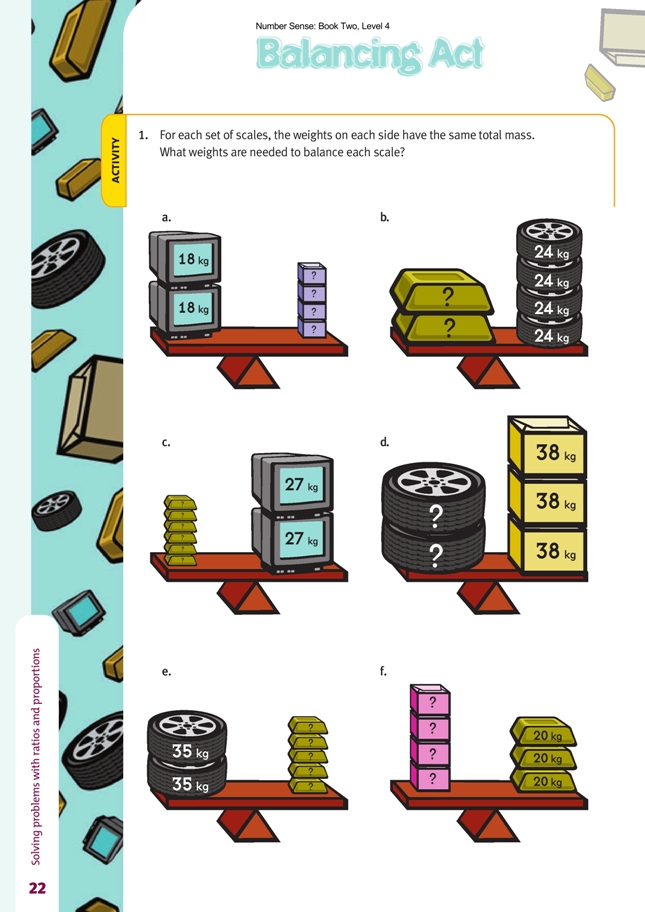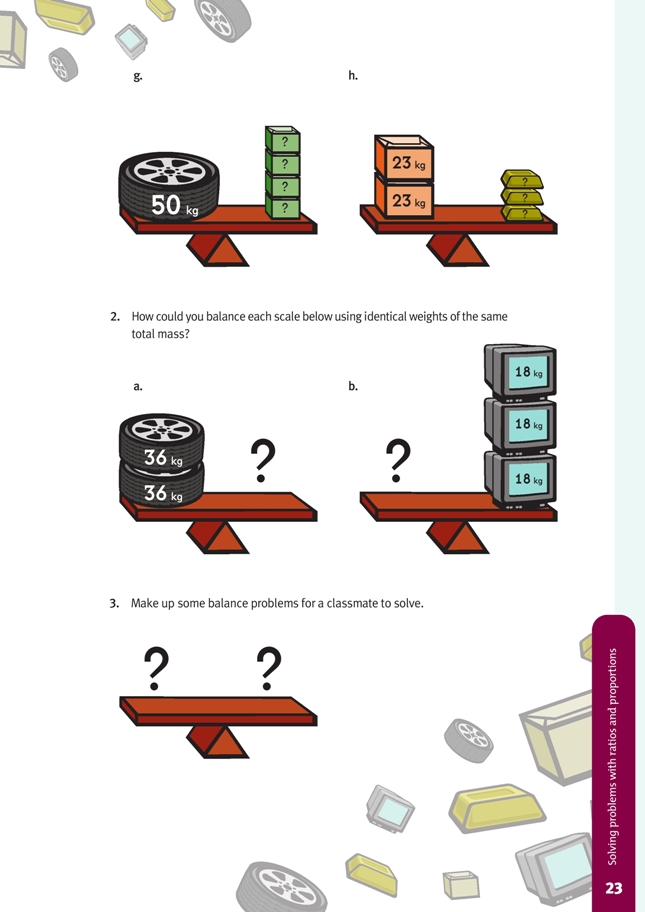This is a level 4 algebra activity from the Figure It Out series.
A PDF of the student activity is included.
Click on the image to enlarge it. Click again to close. Download PDF (696 KB)
find unknowns to balance a linear equation represented by a balance scales diagram
This is an excellent set of tasks to help the students to recognise that the two sides of an equation name the same number. This is different from the notion that many students develop that an equation is a record of an operation and nothing else. The idea that an equation is also a statement or expression that says two numbers are equal is crucial to work in algebra. It means that if you do something to one side of an equation, you must do the same to the other to maintain the equality.
The students may have some good strategies for approaching question 1. For example, in the first two examples, they might notice that each weight on the left must be equal to two of those on the right. Another way is to set them out as equations. For example, the first one would be 2 x 18 = 4 x and the next would be 2 x = 4 x 24. It is then a matter of figuring out what the product (or total) is on the side with sufficient data and then working out what size weights are needed to get the same total on the other. In the case of 2 x 18 = 4 x , the students will soon calculate that the left-hand side is 36. To make the right-hand side 36, they will have to multiply the 4 by 9. Similarly, with 2 x = 4 x 24, the right-hand side totals 96, so to have the left-hand side also totalling 96, the 2 must be multiplied by 48.
In question 2, the students get an opportunity to construct their own set of weights to balance out the two lots of 36 and the three lots of 18. Different students are likely to come up with different possibilities, which can be shared. The answer lists a number of possible sets of weights. Notice that it suggests that the weights need not be whole numbers. For instance, 12 lots of 4 1/2 is also equal to 3 lots of 18 (that is, a total of 54). The possible use of weights that are mixed fractions (such as 4 1/2) may open up the activities to some nice challenges, especially when the students make up some for a partner to solve. Some of the problems generated in question 3 may be worth posing to the whole class.
Answers to Activity
1. a. 9
b. 48
c. 9
d. 57
e. 14
f. 15
g. 12 1/2
h. 15 1/3
2. Solutions will vary, but some possibilities are:
a. 6 lots of 12; 3 lots of 24; 4 lots of 18; 8 lots of 9
b. 6 lots of 9; 2 lots of 27; 12 lots of 4 1/2
3. Problems and solutions will vary.

